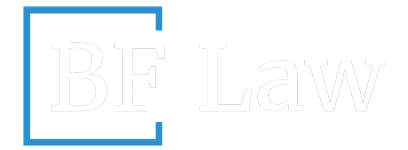
The Family First Coronavirus Response Act was passed and signed by the President on March 18, 2020 and it may have significant impact on all businesses with 500 or fewer employees. The new law takes effect on April 2, 2020 and will remain effective until December 31, 2020. This new law also applies to ALL employers with fewer than 500 employees, although employers with fewer than 50 employees may later be deemed exempt by the Secretary of Labor through subsequent regulations if the Act would jeopardize the business’s viability. The remainder of this article will only focus on (1) the Emergency Paid Sick Leave, (2) expanded FMLA provisions of the new law and (3) what this means for your business.
1. Emergency Paid Sick Leave Act
Eligibility: All employees of employers with fewer than 500 employees, regardless of the length of their tenure with their employer, are eligible for paid sick leave under the Emergency Paid Sick Leave Act.
Qualifying Reasons For Taking Paid Sick Leave: An eligible employee may take paid sick leave if he/she is unable to work (including telework) because:
-
The employee is subject to a federal, state, or local quarantine or isolation due to COVID-19;
- A health care provider advised the employee to self-quarantine due to concerns related to COVID-19 (self-imposed quarantine without medical advice does not qualify under the Act);
- The employee is experiencing symptoms of COVID-19 and seeking a medical diagnosis;
- The employee is caring for an individual (not limited to family members, although there is a stray reference to family members elsewhere in the Act, so stay tuned) who is either subject to a federal, state, or local quarantine or isolation due to COVID-19 or has been advised to self-quarantine due to concerns related to COVID-19;
- The employee is caring for the employee’s child whose school has been closed or place of care is unavailable due to COVID-19 precautions; or
- The employee is experiencing any other substantially similar condition specified by the Secretary of Health and Human Services in consultation with the Secretaries of Treasury and Labor. The precise meaning of this sixth reason will be clarified by the Secretary of Health and Human Services.
Benefit: Full-time employees receive 80 hours of paid sick leave. Part-time employees receive the equivalent of the number of hours they would work, on average, during a two-week period. There is a separate method for calculating the benefit for part-time employees whose schedules vary widely from week to week. For qualifying reasons 1, 2, and 3 (above), eligible employees will receive paid sick leave at their regular rate, except that in no event shall the amount paid exceed $511 per day and $5,110 in total. For qualifying reasons 4, 5, and 6 (above), eligible employees will receive paid sick leave at two-thirds of their regular rate, except that in no event shall the amount paid exceed $200 per day and $2,000 total. Paid sick leave does not carry over from one year to the next, and paid sick time ceases beginning with an employee’s next scheduled work shift immediately following termination of the need for paid sick time (i.e., qualifying need). The Secretary of Labor is required to issue guidelines to assist employers in calculating leave benefits by April 2. The employer can seek reimbursement for the wages paid to employees taking emergency paid sick leave through tax credits applicable to the employer’s portion of Social Security taxes.
Use: All eligible employees may use paid sick time beginning on April 2. Employers may not require eligible employees to first use other paid leave provided by the employer before using paid sick leave under the Act, so this leave is in addition to any paid sick leave or PTO currently provided by employers. Employers may require employees to follow reasonable notice procedures to continue receiving such paid sick time after the first workday (or portion thereof) an employee receives paid sick time under this Act. In other words, employers may not require employees to provide advance notice prior to the first workday on which the employee takes paid sick leave under the Act.
Employer Payroll Tax: Wages required to be paid under the emergency sick leave provisions will not be subject to the 6.2 percent social security payroll tax typically paid by employers on employees’ wages.
Employer Posting Requirement: Employers must post a notice that advises employees of their rights under the Act. The Secretary of Labor is required to create a notice by March 25.
2. Emergency Expansion of Family Medical Leave to Provide Benefits to Employees Whose Child’s School or Place of Care Has Closed
The Families First Coronavirus Response Act also includes the Emergency Family and Medical Leave Expansion Act (the “FMLA Expansion Act”), which provides eligible employees whose child’s school or place of care has closed due to the COVID-19 public health emergency with a new federal source of paid leave.
Eligibility: Under normal circumstances, the Family and Medical Leave Act applies only to employers with 50 or more employees, applies only to employees who have worked for at least 12 months and who had worked at least 1,250 hours during that preceding 12 months, and provides unpaid leave for designated reasons, such as the employees own serious health condition, to care for a family member with a serious health condition, or to care for a newborn infant or an adopted child or foster child placed with the employee. On a temporary basis, the Emergency FMLA Expansion Act amends the FMLA and creates a new leave entitlement. For purposes of the new entitlement only, the Act alters the definition of employer to include all employers with fewer than 500 employees, and expands the definition of a covered employee to include all employees who have worked for covered employers (i.e., those with less than 500 employees) for at least 30 days. Again, the Secretary of Labor has the authority to exempt from the Emergency FMLA Expansion Act certain health care providers and emergency responders, and small businesses with fewer than 50 employees if the Act would jeopardize a business’s viability. We are waiting to here more from the Secretary of Labor on this point.
Qualifying Reason for Taking Expanded FMLA Leave: An eligible employee may take up to 12 weeks of leave if he/she is unable to work (including telework) because the employee must care for his/her child who is under 18 years of age and whose school or place of care has closed due to the COVID-19 public health emergency.
Benefit: A qualifying employee may take up to 12 weeks of leave. The initial 10 days of leave are unpaid, but the employee may elect to use his/her accrued paid sick leave and/or accrued vacation during this otherwise unpaid period. After the initial 10-day period, an employee is entitled to receive from the employer two-thirds of his/her normal wages for the number of hours he/she would be regularly scheduled to work, up to a maximum of $200 per day and $10,000 in total.
Use: All eligible employees may apply for expanded FMLA leave beginning on April 2. If the necessity for leave is foreseeable, the employee must provide the employer with “such notice of leave as is practicable.”
Employer Payroll Tax: Wages required to be paid under the emergency sick leave provisions will not be subject to the 6.2 percent social security payroll tax typically paid by employers on employees’ wages.
Restoration to Position: For employers with 25 or more employees, an employee returning from expanded FMLA leave is entitled to reinstatement to the same or an equivalent position. For employers with fewer than 25 employees, an employee returning from expanded FMLA leave is entitled to reinstatement to the position held by the employee when the leave commenced unless that position does not exist due to economic conditions or other changes in operating conditions caused by the public health emergency. In such case, the employer must make reasonable efforts to restore the employee to an equivalent position, and if those efforts fail, make reasonable efforts for at least a year to contact the employee if an equivalent position becomes available.
3. What Does This Mean For Your Business?
Essentially, a full-time eligible employee unable to work due to the closure of a child’s school or place of care will be entitled to 80 hours (10 days) of Federal Paid Sick Leave and up to 12 weeks of job-protected Emergency FMLA leave, with the first 10 days paid as Federal Paid Sick Leave at their full rate, but not more than $200 per day and $2,000 in the aggregate per employee (although the employee can elect to use other sick pay, vacation, or PTO instead), and the remaining 74 days paid by the employer at two-thirds of their regular pay up to a maximum entitlement of $200 per day and $10,000 in the aggregate per employee, all for a total leave payout of no more than $12,000 in the aggregate per employee. Meanwhile, eligible full-time employees unable to work due to qualifying reasons under the Paid Sick Leave Act other than a child’s school or childcare closure will be entitled to receive 80 hours (10 days) of Federal Paid Sick Leave paid by the employer at the full regular rate up to a maximum entitlement of $511 per day and $5,110 in the aggregate per employee (although the employee can elect to use other sick pay, vacation, or PTO instead). Quarantine will not trigger the Emergency FMLA leave provisions, although there may be traditional, unpaid FMLA leave rights available, as well as unemployment insurance.
Finally, to help employers pay for these requirements, the law provides a refundable payroll tax credit for 100 percent of qualified paid sick leave wages or qualified family leave wages paid by an employer, which is permitted against the employer portion of Social Security taxes. It also appears that the costs associated with funding this new law will be fully reimbursed by the federal government within three months through the refundable tax credits that count against the employer’s payroll tax. In addition, the credit is refundable if it exceeds the amount the employer owes in payroll tax.
At this point, we are still in a holding pattern regarding how this law will impact employers with 50 or fewer employees. In the interim, employers need to act swiftly to amend policies and train employees to ensure that employee leaves are administered in accordance with the new law.
If you have any questions regarding these new Federal employment laws, please contact Elizabeth Fritzinger. Berry & Fritzinger can help your business understand and comply with California’s employment laws.
